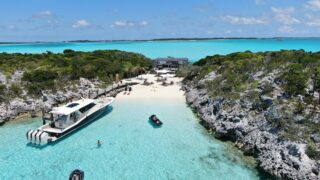This website uses cookies so that we can provide you with the best user experience possible. Cookie information is stored in your browser and performs functions such as recognising you when you return to our website and helping our team to understand which sections of the website you find most interesting and useful.
Ocean tracks: inside Iguana Yachts
By Rory FH Smith | 12 January 2023 | Cars & Yachts, Sport, Travel
Combining luxury and practicality for tidal coastlines and land-locked boat lovers alike, we test this unique brand’s amphibious solution to high tech
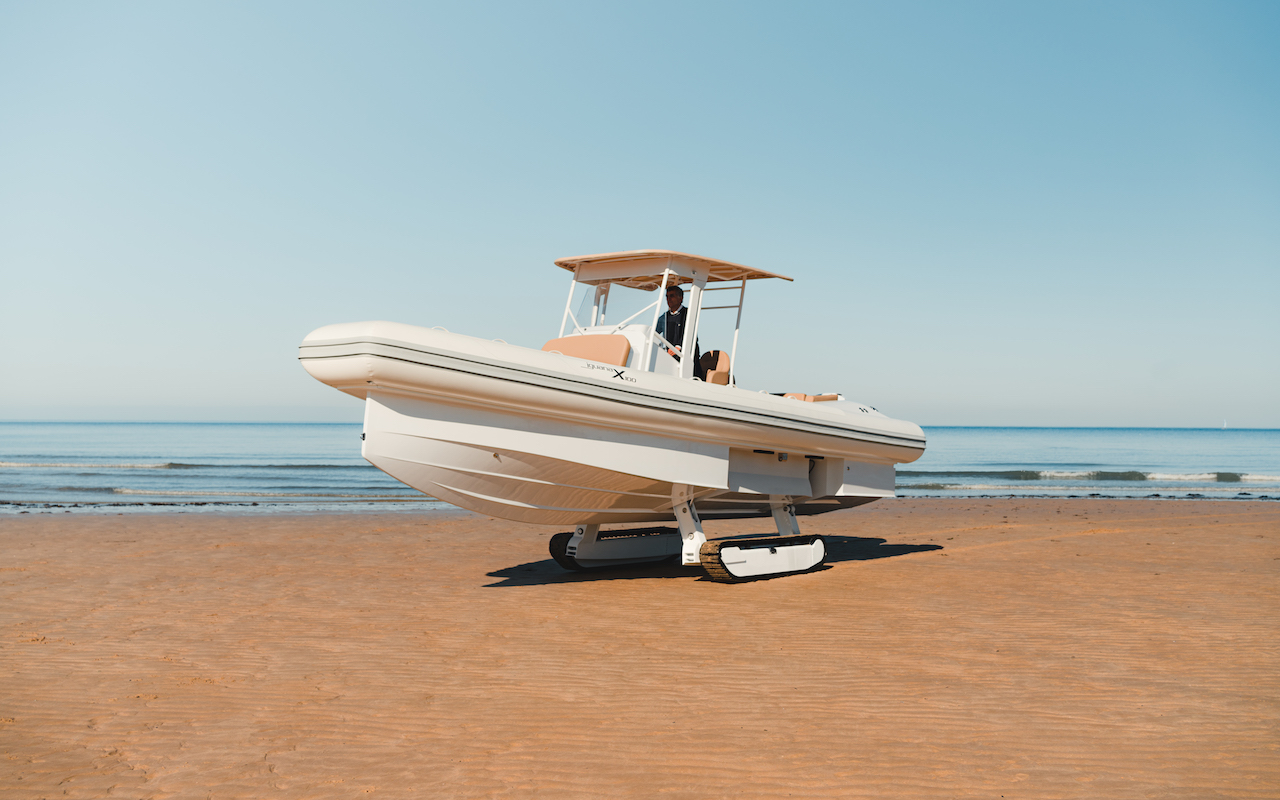
From time to time, life on the ocean isn’t all plain sailing. While the world of powerboats appears to be as glamorous as it gets, Antoine Brugidou, founder of Iguana Yachts will happily tell you otherwise.
Originally from Normandy, on France’s Atlantic coast, Antoine has first-hand experience of the niggles associated with boat ownership. And we’re not just talking about the financial and admin side of things; what Antoine faced was a physical problem. Living in one of the most tidal stretches of coastline in the world, the engineer would struggle to launch his boat due to lack of access to the sea. With only a few marinas available, and space in them at a premium, local sailors typically tow their boats for long distances across rocks and mud to reach the sea.
It was Antoine’s will to overcome this problem that led him to create Iguana Yachts and invent a craft that didn’t need to be anchored, towed or berthed – one that could be launched anywhere, tackling some tricky off-road terrain in the process.
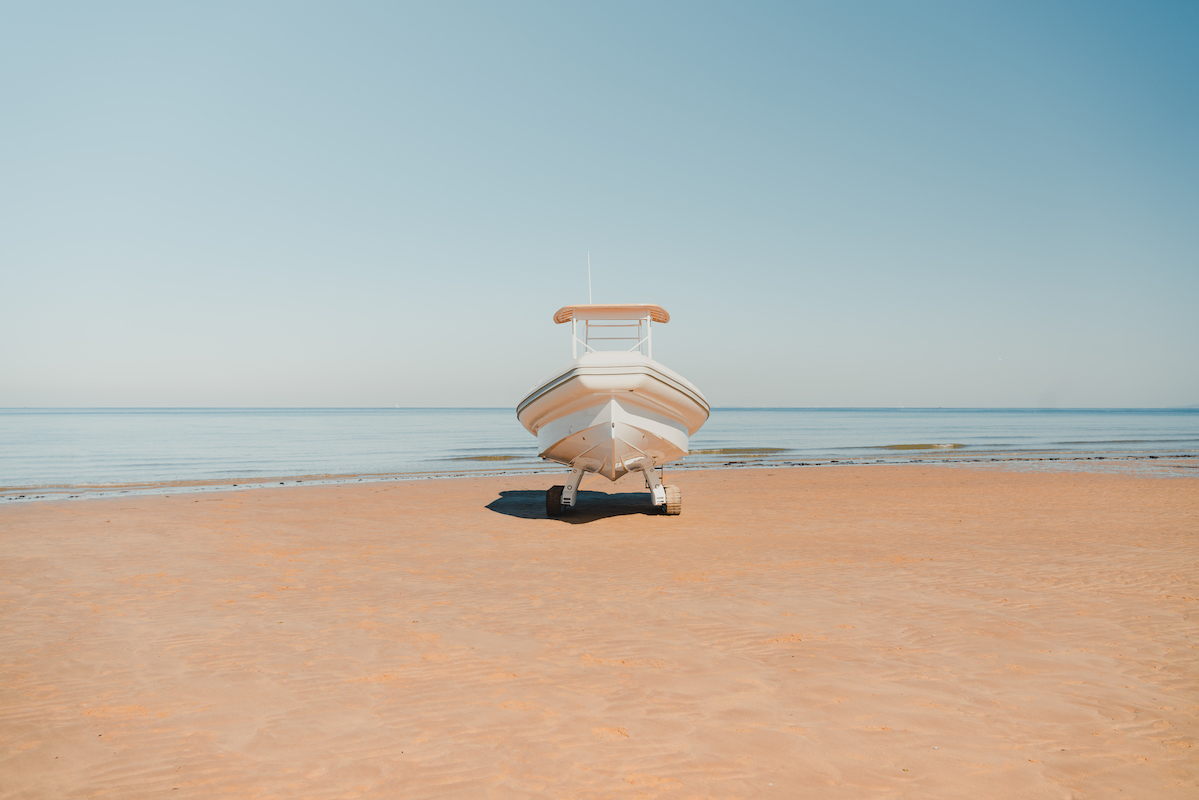
Making waves
His vision initially took the form of a unique mobility system in 2008, the year he founded Iguana and, from there, the company went on to make its first boat – the Iguana 24 – in 2011. Mating a sleek, solid-hull powerboat with military-style tank tracks, Antoine had finally found a solution to his problem, albeit a rather unorthodox one. Armed with caterpillar tracks and a small inboard engine to power them, the Iguana could drive itself over the rough terrain and long tidal beaches of Normandy to launch itself with minimal hassle.
While amphibious boats have existed for years, typically with wheels mounted onto legs that deploy when needed, the Iguana’s robust tracks make it capable of taking on more rugged landscapes – not to mention looking like something that Q-branch would dream up for 007. From the launch of the first model in 2011, the range has grown to include nine different boats, including RIBs and even a professional line designed for the security and rescue industries. Yet, while this relative newcomer to the motorboat world certainly looks the part, it’s true test is how it performs out on the water.
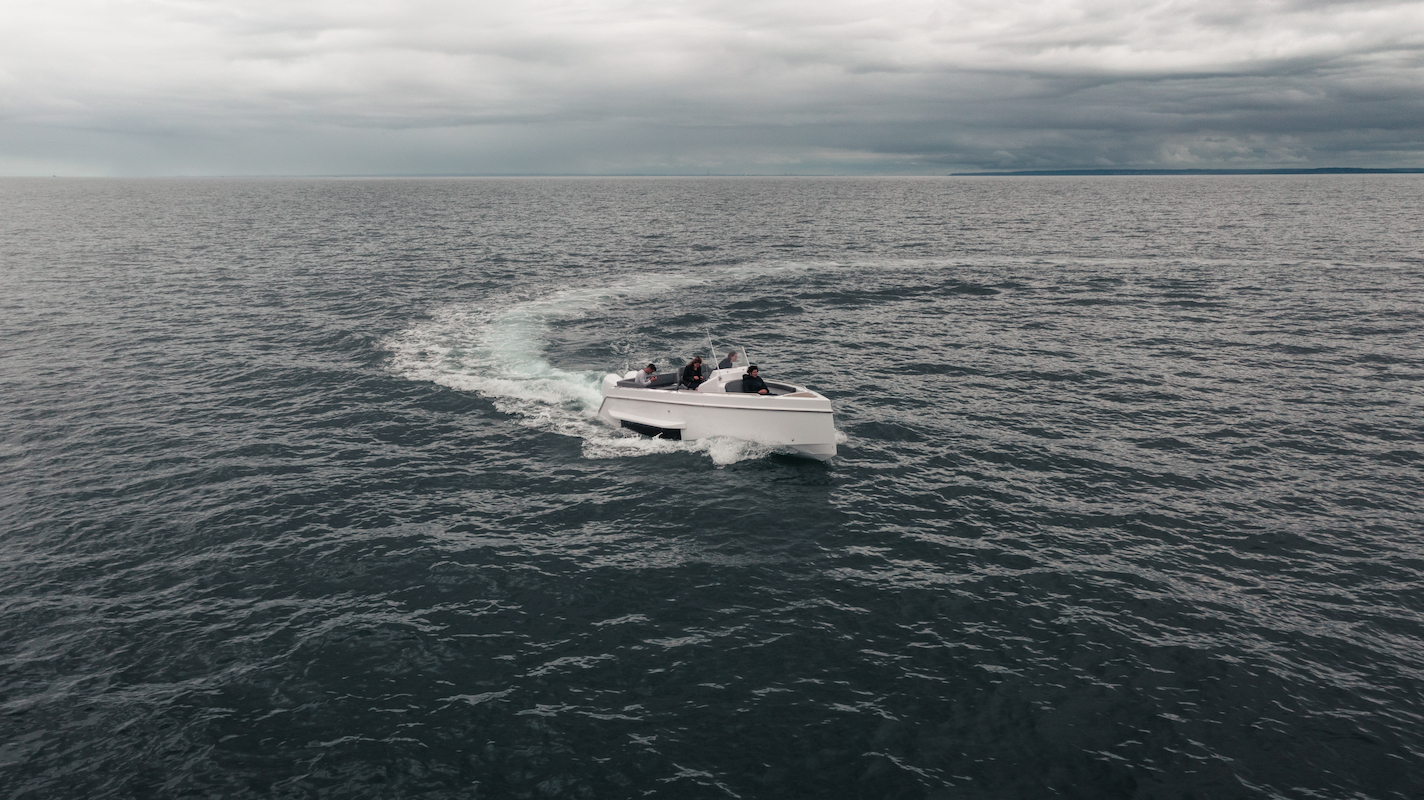
First laying eyes on the sleek, white and grey Iguana X100 in Berthon Marina in Lymington, there’s little to set it apart from the hundreds of other glimmering craft moored up. Measuring in just under 10m long, the boat sports a solid, carbon fibre-reinforced hull with an inflatable RIB collar – much the same as other craft around it. But it’s on closer inspection, just above the waterline, that you can catch sight of the secret to the Iguana’s versatility: its tracks.
Once on board, and with the X100’s twin 300hp Mercury Pro XS engines all fired up, we’re ready to set sail for the Solent. With 600hp behind it, the X100 is no sloth in the open water despite weighing 3.5 tonnes. Reaching top speeds of 50 knots is a smooth process, with the X100 remaining planted as you ease the throttle forward and feel the pace pick up. With room for 12 people on board and sizable storage areas, this is a capable and comfortable day cruiser.
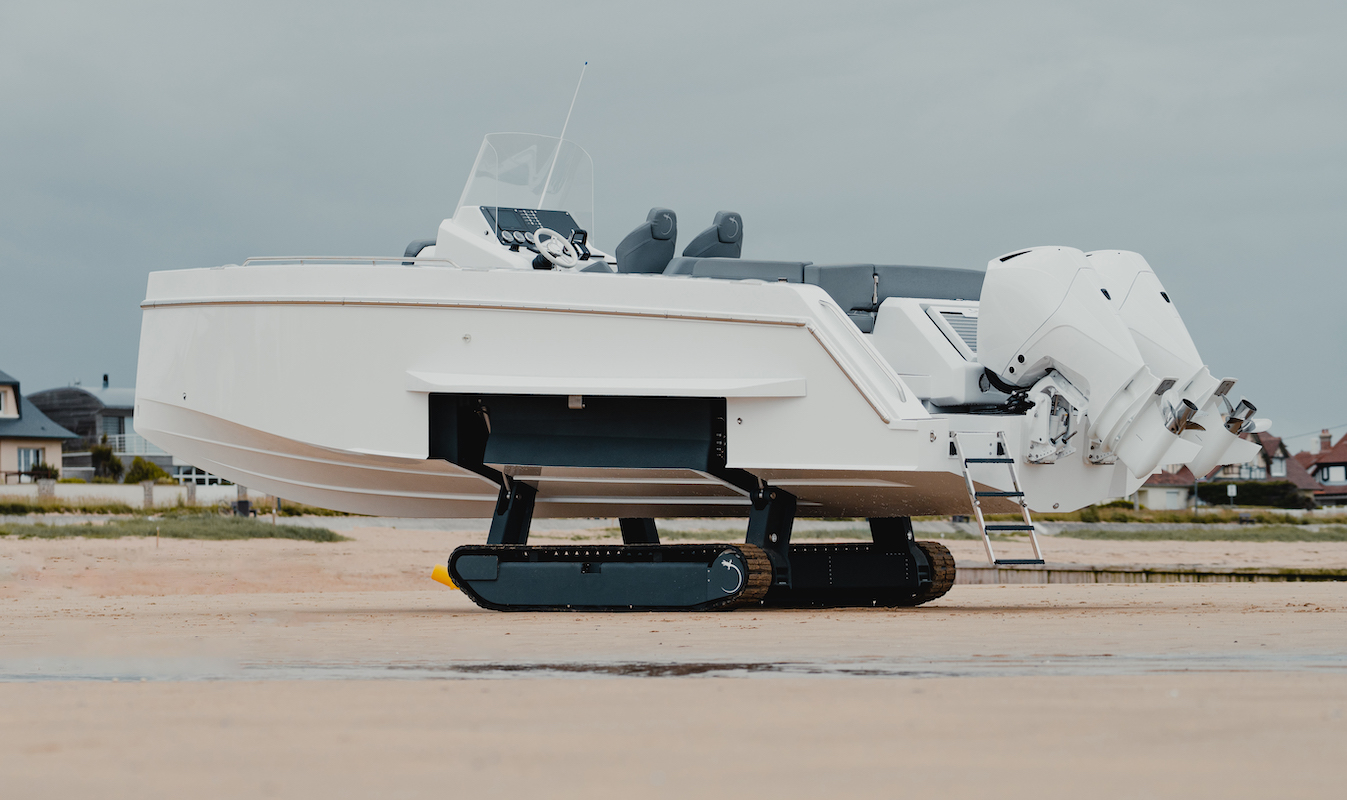
Sea legs
Soon enough, it’s time to experience the X100’s party piece and put its amphibian abilities to the test. Looking for the ideal spot to make an unplanned landing, we approach a slipway, cutting the engines to a crawl as we get closer.
Pushing down on a button on the dashboard, there’s a bleep before we start to feel the two metal legs drop down into the water like a plane’s landing gear. Taking only eight seconds to deploy, once the tracks are in place I ease forward on two separate throttles – one to control each track – and the inboard motor hums as the caterpillar tracks rotate and bite onto the surface with a reassuring clunk. Gradually, like something from a Bond movie, the X100 steadily hauls itself out of the water and onto dry land, tipping over the crest of the steep slipway and continuing onwards down the road to the boatyard.
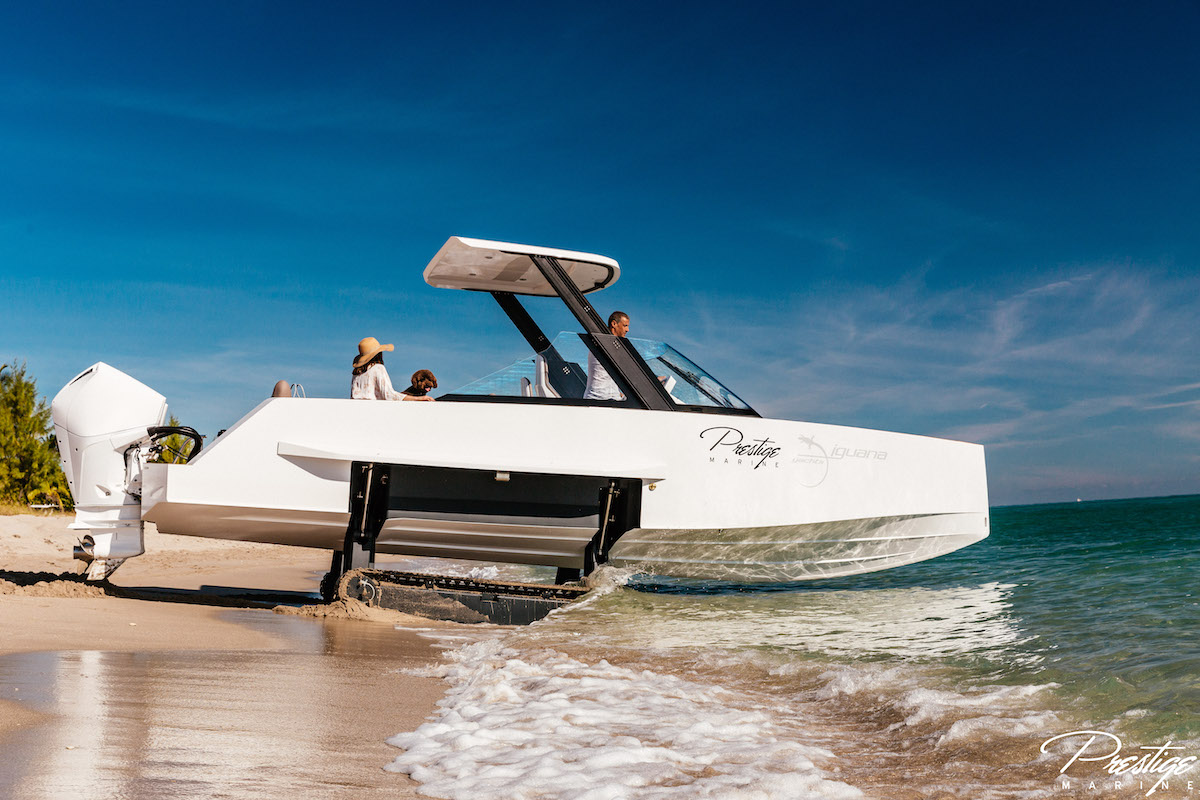
As eye-catching launching from dry land as it is emerging, the X100 can launch nose or rear first. My relative lack of experience leads me to reverse into the water, ensuring the engines are well submersed by the time I fire them up for a speedy getaway from the crowd that has assembled on the seawall.
While the X100 might have blended in moored in the marina, it’s a different story when you’re looking down on cars and passers-by from behind the wheel of an amphibious, luxury landing craft. Capable of dealing with 40% inclines, rough rocks, mud and beaches alike, there aren’t many places the Iguana can’t land or scurry across.
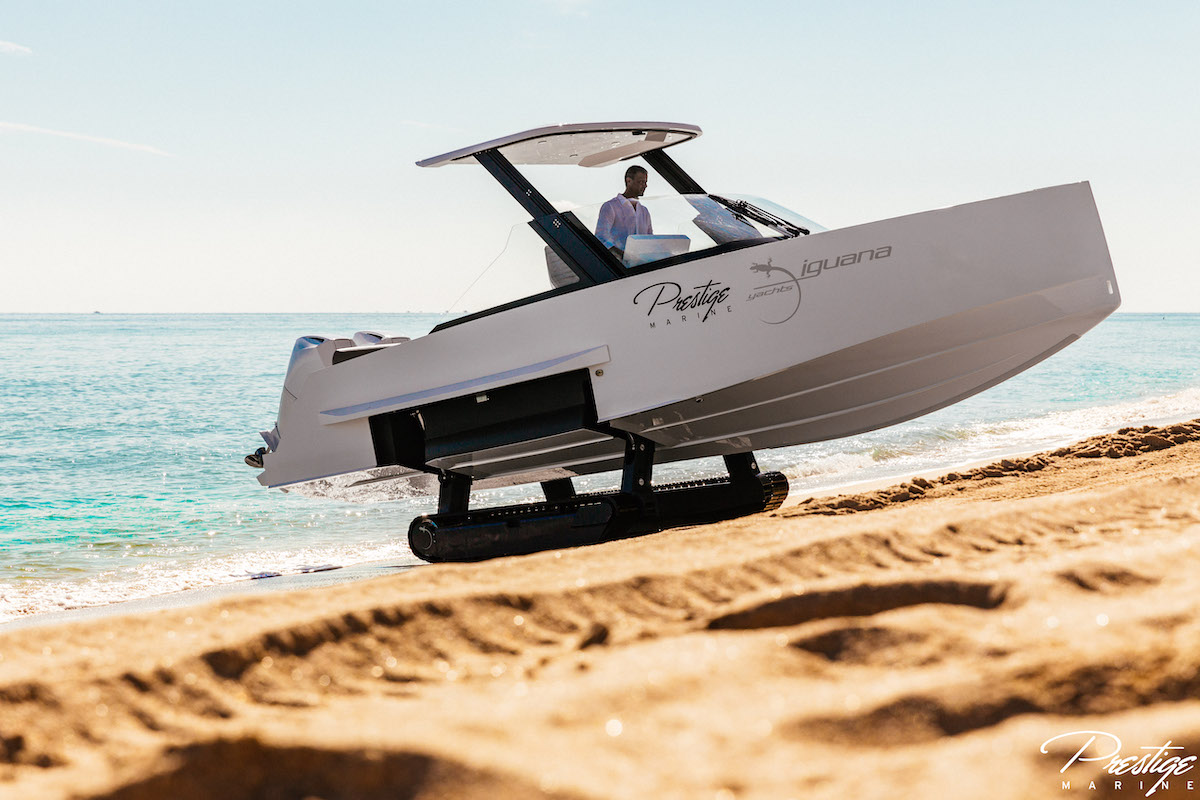
Though it may have been born of frustration, Antoine has successfully developed a slick solution to a problem that many estuary dwellers and land-locked sea lovers face. While the X100’s €320,000 price tag might seem steep, Antoine’s mating of two very separate engineering solutions is as remarkable as it is practical – not to mention its ability to turn heads in the harbour, beach or wherever you choose to land.
In an age where sensibility and financial restraint often suffocate creativity, inventions like the Iguana are a rare glimpse at what’s possible when willpower and ingenuity ignite.
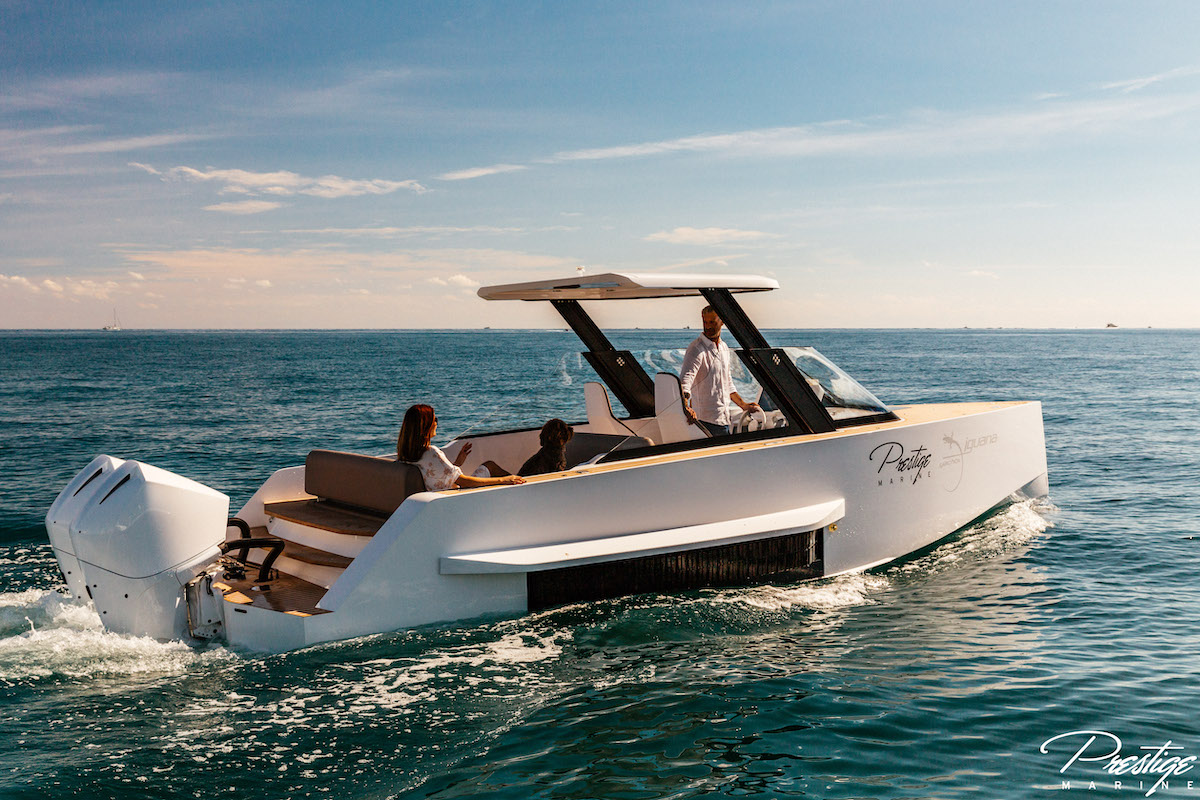
iguana-yachts.com




